Lunges with weights: Using barbells and dumbbells in lunges and step ups
Already got bodyweight lunges down? Here’s how to do lunges with weights
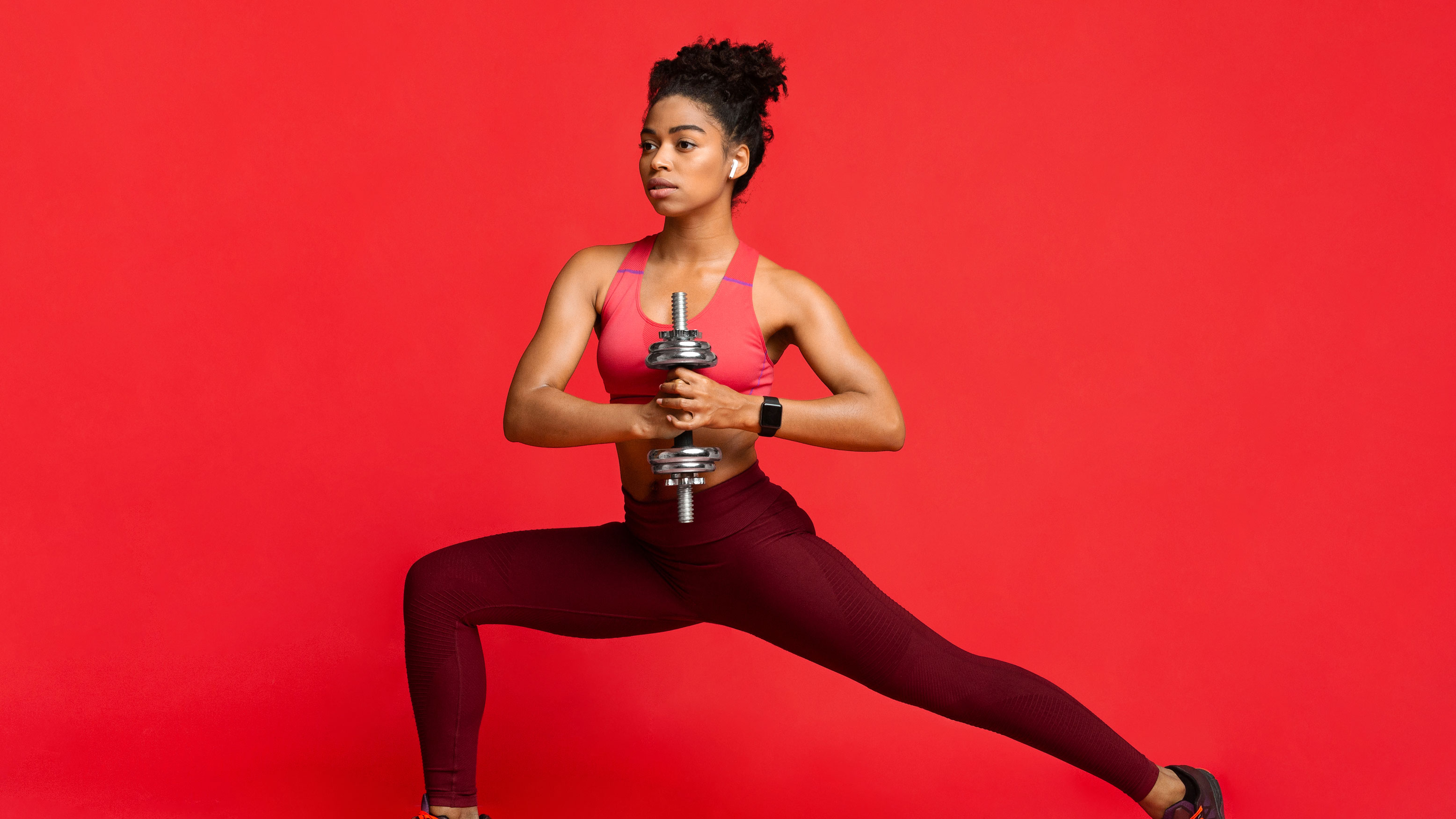

If you’re here, it’s pretty likely you’ve already learned how to do lunges. But lunges with weights are more challenging, helping you to strengthen your legs, glutes, hips and core.
The classic bodyweight exercise and its more explosive variations are terrific lower-body exercises, and adding extra resistance using lunges with weights only compounds that.
Below we outline how to do various versions of lunges with weights, using both barbells and dumbbells, although you could also sub-in kettlebells if that's what you've got at home. And if you don't yet own any home weights, now's the perfect time to invest with our guides to the best adjustable dumbbells and the best kettlebells to help make your decision.
Lunges with weights: What changes compared to bodyweight lunges?
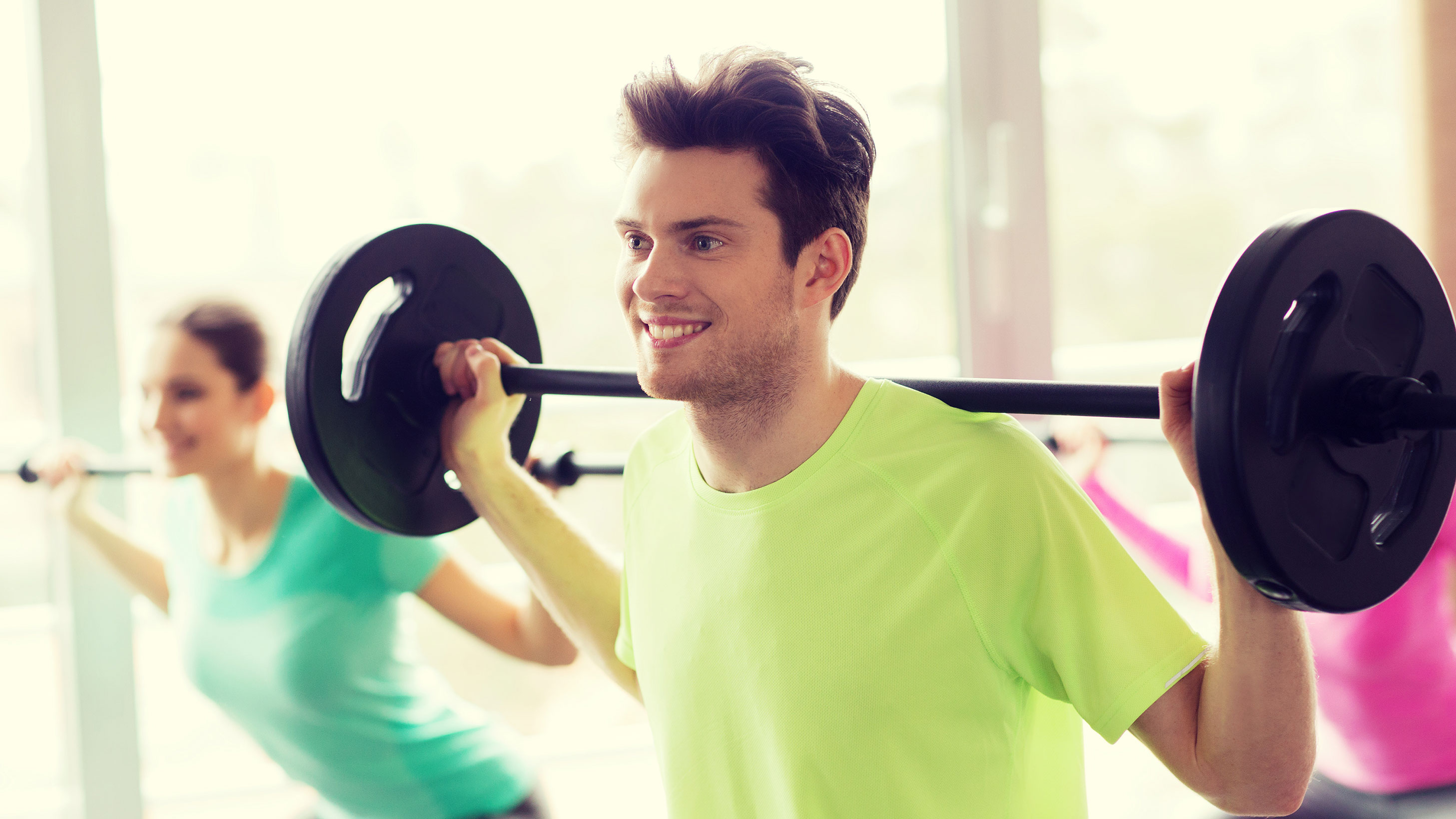
Naturally, the more weight you’re carrying, the harder lunges with weights are to complete. If you use dumbbells, holding the weights either side of you, you need to use more force to stand up and return to a neutral position. As your legs work harder, they’ll become stronger. You can even incorporate other dumbbell moves like shoulder presses to help work your upper body during the lunge.
Barbells also act in the same way, with the added impetus of training your core: As the weight in a barbell lunge is balanced across your shoulders, the “trunk” of your body must work harder to avoid toppling from one side or the other.
If this is your first time performing a barbell squat, pick a light weight or even just the bar, as you get used to the change in position. If you’re looking for a six-pack or a stronger core, barbell squats will help while also training your legs.
Lunges with weights: Step ups and reverse lunges
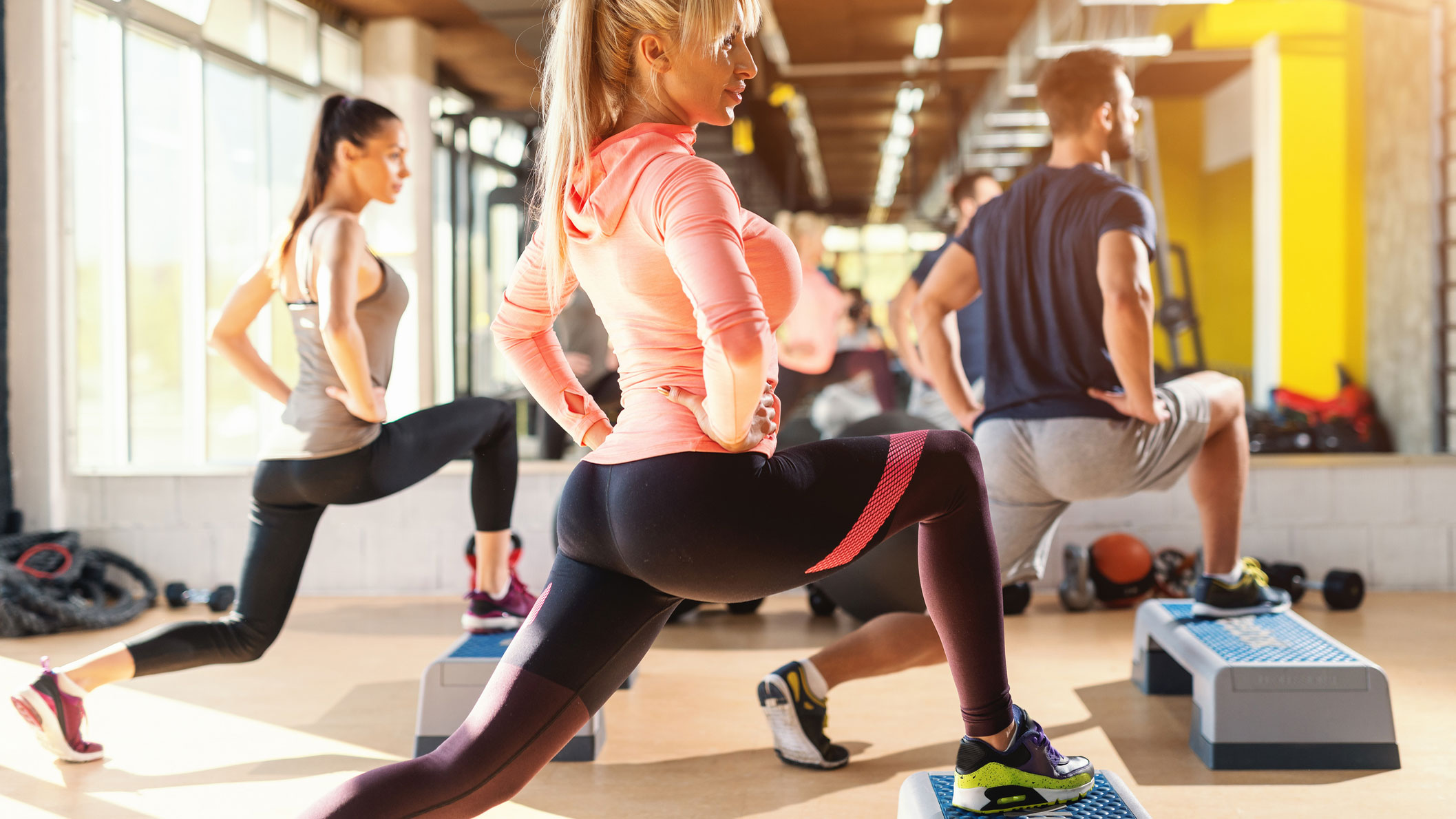
In our article on how to do bodyweight lunges, we covered the side lunge as well as some explosive variations on the move. However, if you’re looking to prioritise your glutes, reverse lunges (simply performing the same move, but lunging backwards instead of forward) can help with that. According to research from the University of Seoul reverse lunge movements help develop the glutes and quads more efficiently than other lunge movements, and have a lower risk of knee injuries.
Get the Fit&Well Newsletter
Start your week with achievable workout ideas, health tips and wellbeing advice in your inbox.
To add further distance away from the ground, you can add a step or box in addition to the weight. Because you’re stepping forward onto a raised platform, steps work the muscles in your hips and quads according to the Journal of Athletic Training, because you must raise your leg higher to complete the movement. A forward stepping motion shorter than a lunge, the step-up, can also be performed under weight to help tone and train your legs.
Below are a few great examples of lunges with weights, using barbells, dumbbells and steps, to help you get a great lower body.
Barbell box lunge
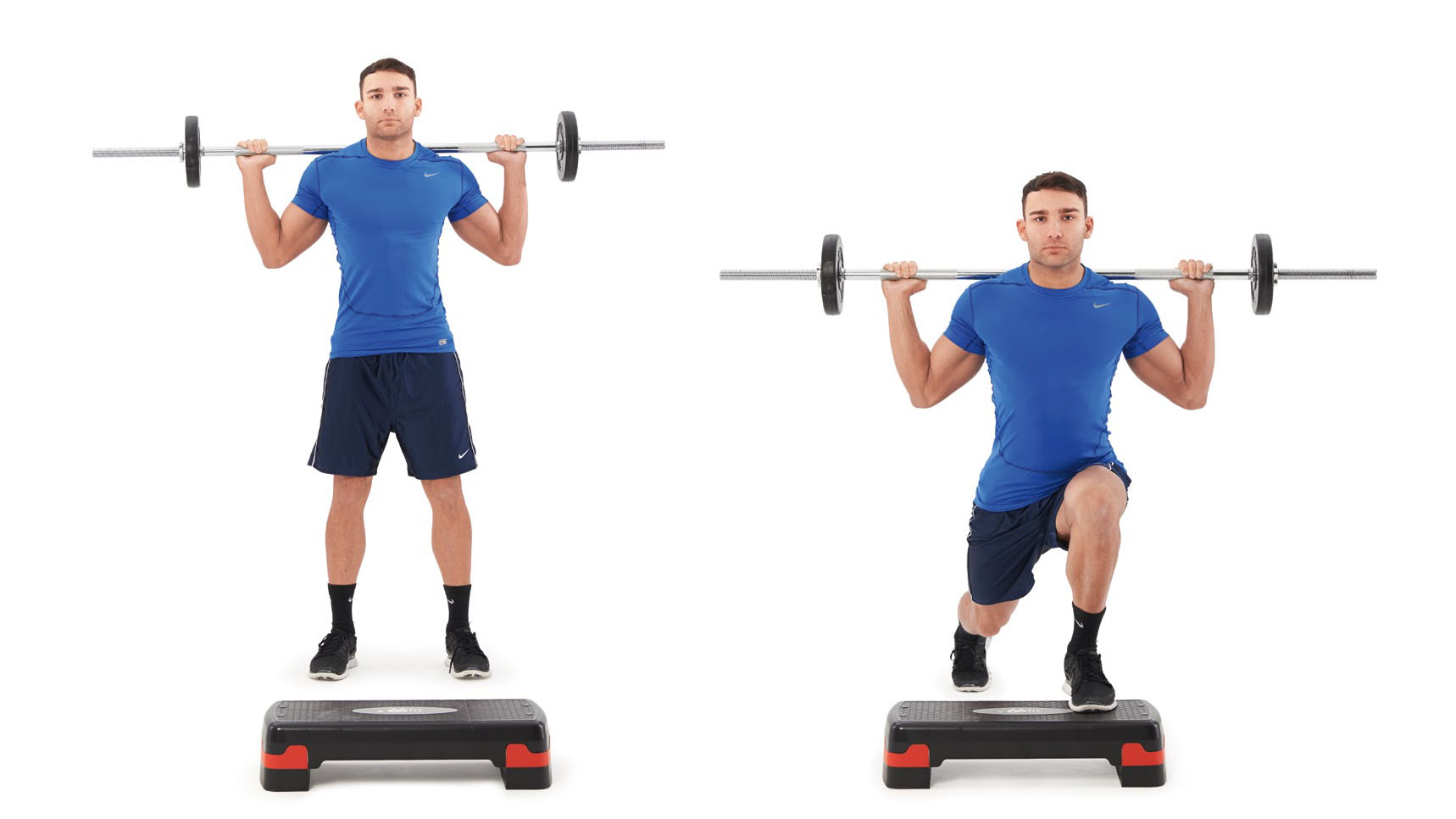
The lunge is an excellent exercise for the quadriceps. This variation is performed using an exercise step – the sort used in step aerobics classes.
- With your feet set at hip-width apart, pick up a barbell with an overhand grip and place the bar on your shoulders, resting behind your head. Stand around two feet from the step, remembering to brace your core.
- Slowly lunge forward onto the step with your left leg. Continue until your left knee is bent at least 90 degrees. Your right knee should almost touch the floor. Pause before quickly returning to the starting position.
Reverse barbell box lunge
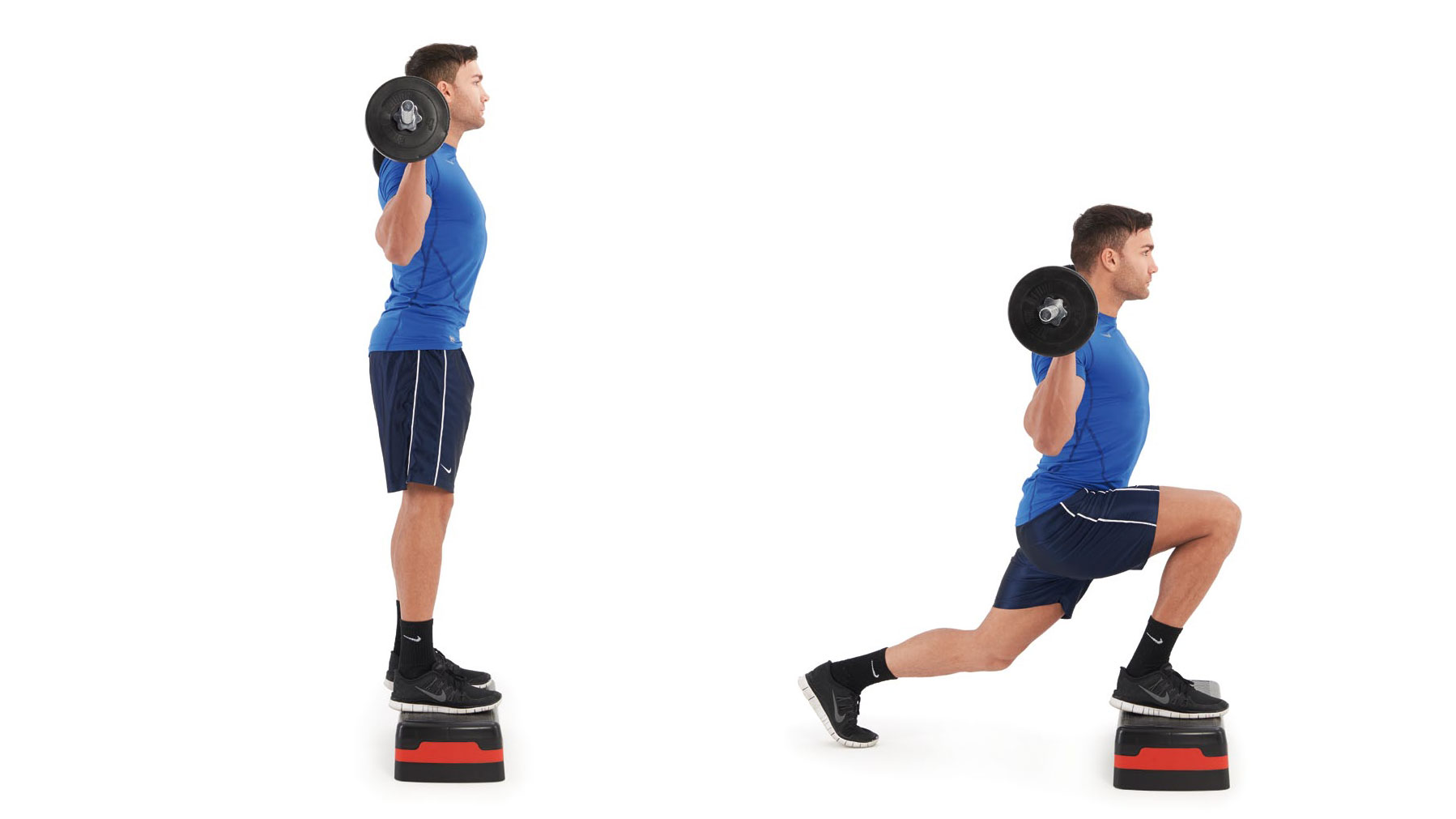
This variation reverses the movements of the barbell box lunge. Try not to step back too far; the movements should remain controlled throughout, with good balance.
- Stand on an exercise step, with your feet a few inches apart. You should be holding a barbell in an overhand grip, with the bar resting on your shoulders behind your head.
- Slowly step backwards with your left leg until you’re in a lunge position. Pause for a couple of seconds, and then return to the starting position by pushing up with the heel of your right leg. That’s one repetition.
Barbell step up
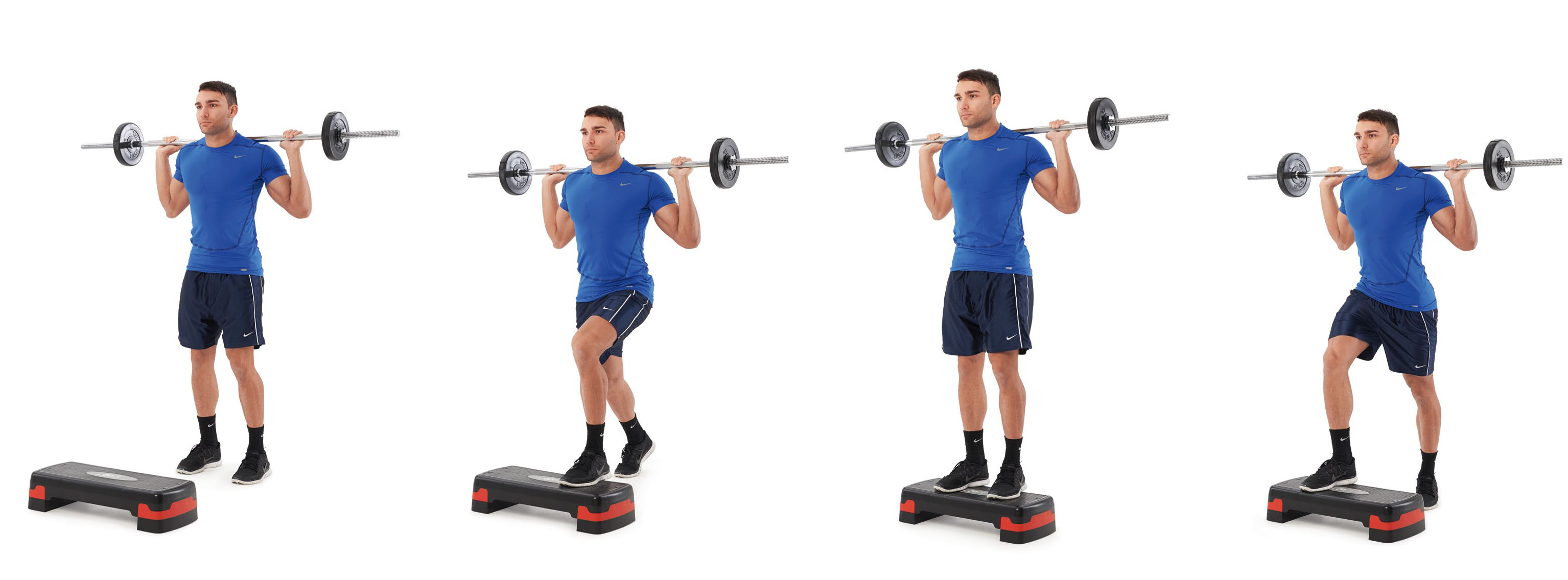
Step exercises offer an ideal workout for the calves. You can perform them with or without weights, though if you’re carrying a barbell it makes the exercise a whole lot tougher. Remember to alternate legs during workouts – try five on one leg, then swap over.
- Stand with your feet hip-width apart around a stride-length away from an exercise step. Pick up a barbell with an overhand grip and rest the bar on the top of your shoulders.
- Leading with your left leg, step forward purposefully onto the exercise step.
- Once both feet are on the step, pause for a second or two.
- Step backwards with your right leg and return to the starting position. That’s one repetition.
Dumbbell step up
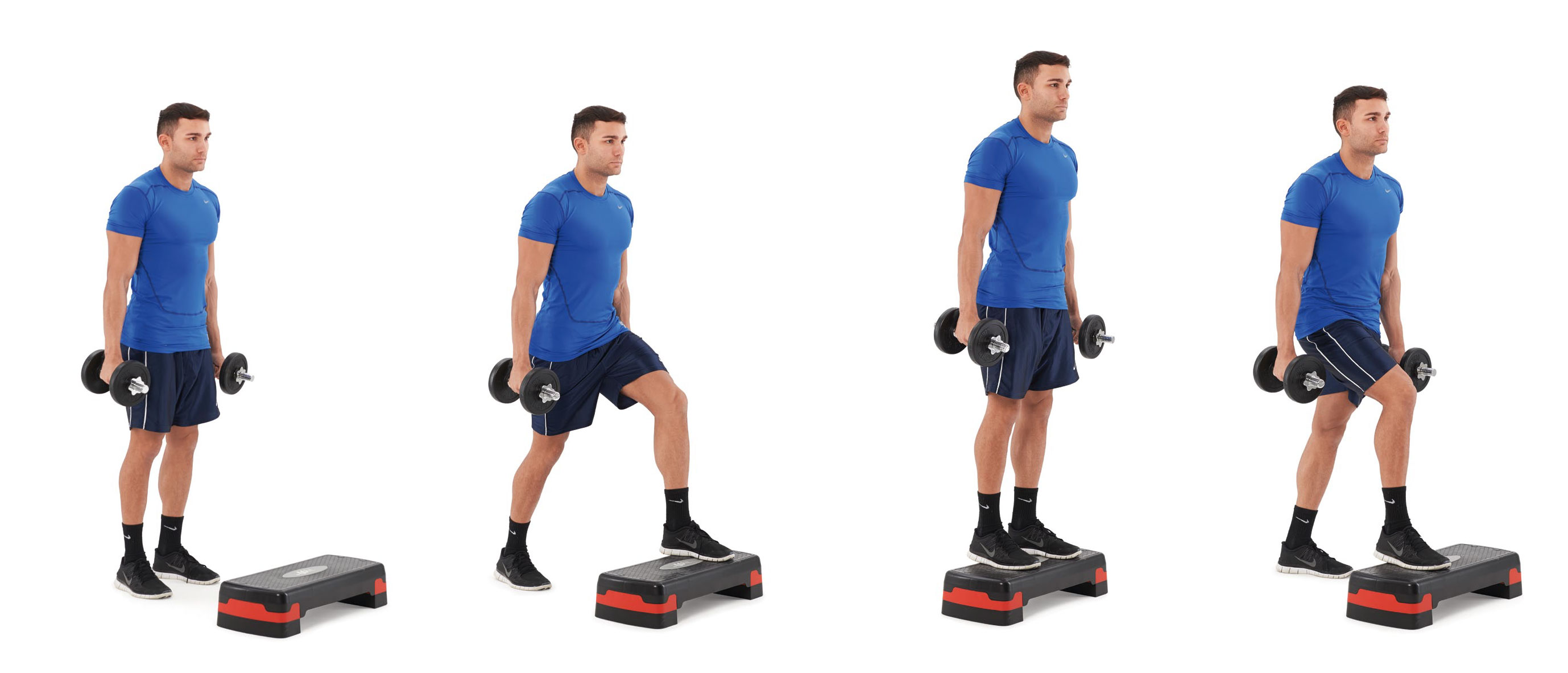
As with many weights exercises, you can swap barbells for dumbbells when performing the step-up.
- Stand at stride-length away from an exercise step, with your feet a few inches apart. Hold a dumbbell in each hand at arms length, down by your sides.
- Step forward onto the step with your left foot, pushing down on your heel when it lands to power the rest of the movement.
- Complete the movement until you’re stood on the box, then reverse it to return to the starting position.
- Repeat the exercise, this time moving forward with your right foot.
Reverse lunge and press
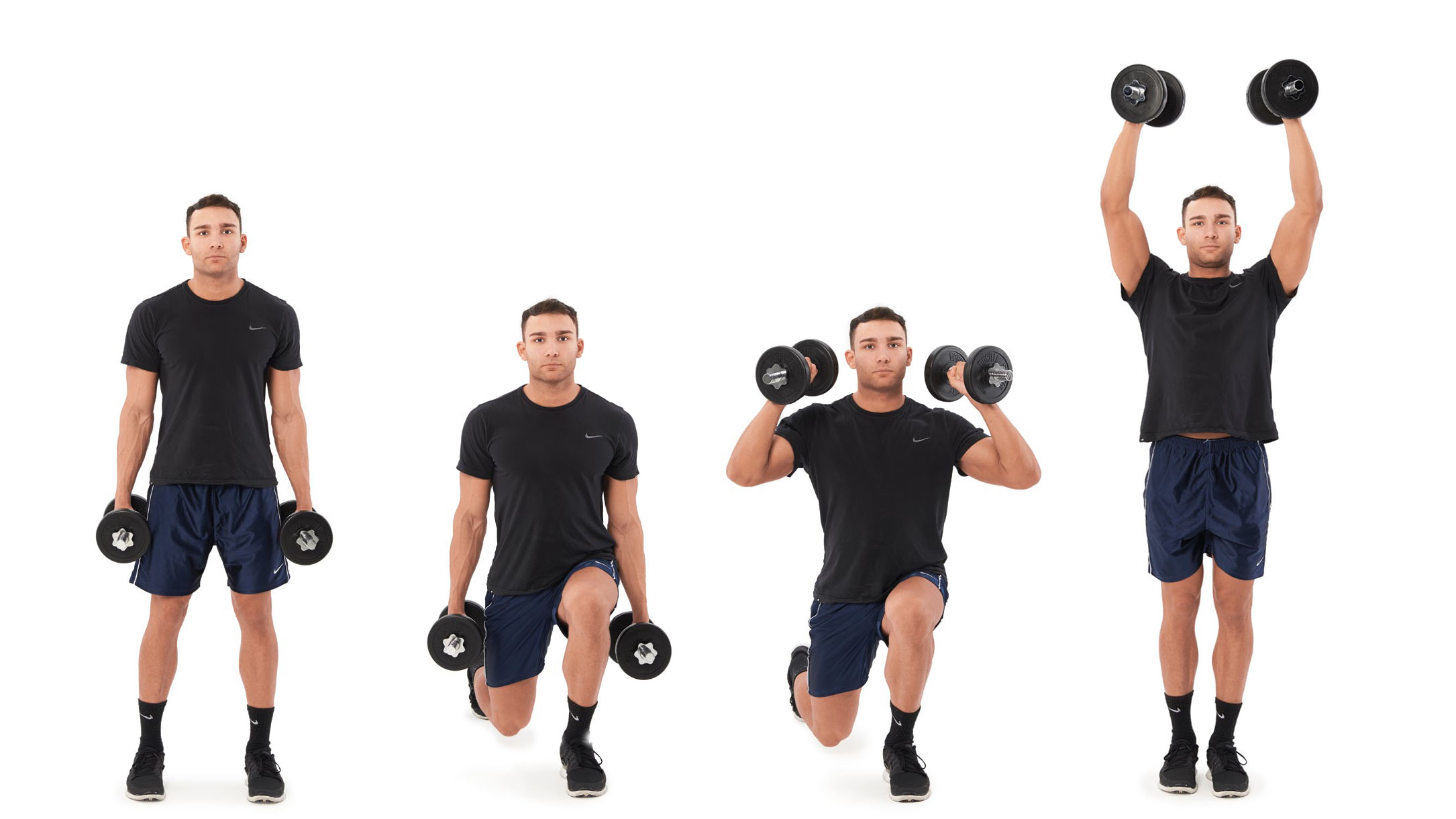
Adding lunges to weights moves increases the strain on your heart, guaranteeing a sweaty cardiovascular workout.
- Pick up a pair of dumbbells with a hammer grip and let your arms hang by your side. Stand with your feet roughly shoulder-width apart.
- Step backwards with your right foot and perform a reverse lunge.
- As you dip your body down, lift the dumbbells up to your shoulders.
- Simultaneously explosively push up to a standing position and raise the dumbbells straight above your shoulders. Slowly bring your arms back down to your sides to complete one repetition.
Liked this?
Matt Evans is an experienced health and fitness journalist and is currently Fitness and Wellbeing Editor at TechRadar, covering all things exercise and nutrition on Fit&Well's tech-focused sister site. Matt originally discovered exercise through martial arts: he holds a black belt in Karate and remains a keen runner, gym-goer, and infrequent yogi. His top fitness tip? Stretch.